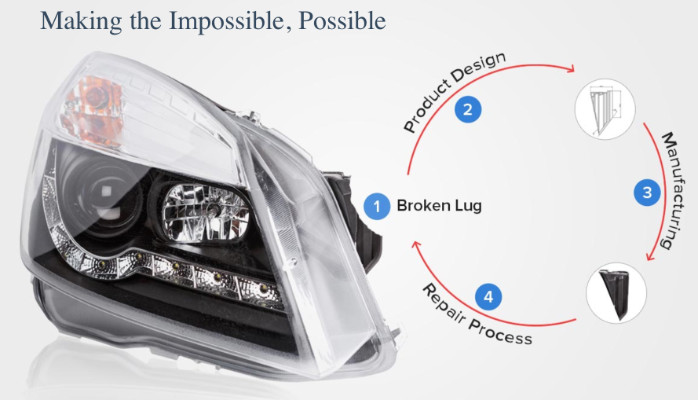Meetings have long been a cornerstone of corporate collaboration and decision-making. However, they are often inefficient, unfocused, and unnecessarily long. While they should drive alignment and productivity, the reality is that many meetings become time sinks rather than value-generating discussions.
Consider these alarming statistics:
- 37% of employees’ time is spent in meetings.
- 25–50% of that meeting time is wasted.
- 70% of attendees bring other work with them to meetings.
These figures highlight a critical issue: meetings, in their current form, often fail to achieve their intended purpose. To maximize efficiency and impact, businesses must rethink how, when, and why they hold meetings. One major factor contributing to unproductive meetings is the excessive use of personal devices, including laptops and mobile phones.
The Hidden Costs of Inefficient Meetings
The consequences of unproductive meetings extend beyond wasted time. They affect workplace morale, decision-making, and even financial performance.
1. Lost Productivity
Employees spend an excessive amount of their workweek in meetings, leaving little room for deep, focused work. Instead of tackling critical projects, they are stuck in discussions that could have been summarized in an email. The result? Lower efficiency, missed deadlines, and prolonged project cycles.
2. Decision-Making Bottlenecks
Meetings should streamline decision-making, but without structure, they often create bottlenecks. When conversations lack direction or clear action steps, discussions become repetitive, and key decisions get postponed.
3. Employee Frustration and Burnout
A culture of back-to-back meetings leads to mental exhaustion and disengagement. Employees may feel their time is not respected, resulting in lower job satisfaction and increased burnout.
4. The Distraction of Personal Devices
One often-overlooked problem in meetings is the constant presence of laptops and mobile phones. While these devices are necessary for daily work, their usage during meetings can reduce engagement, dilute focus, and encourage multitasking.
Should Laptops and Mobile Phones Be Banned from Meetings?
A growing number of organizations are considering a “No Device” policy during meetings to enhance focus and engagement. According to BenQ’s research, banning personal devices can significantly improve meeting outcomes by:
- Reducing Multitasking: Many employees check emails, respond to messages, or work on unrelated tasks during meetings. This divided attention leads to inefficiency and missed discussions. Removing devices ensures participants stay focused.
- Improving Decision-Making: Studies have shown that even the presence of a mobile phone can reduce cognitive function and engagement in conversations. Without distractions, employees can contribute more meaningfully.
- Eliminating Unnecessary Setups: Meetings often waste time figuring out how to display documents, switch between devices, or manage screen-sharing issues. A device-free approach encourages attendees to come prepared with necessary materials beforehand, making meetings more streamlined.
How to Enforce a Device-Free Meeting Policy
If your organization struggles with distracted meeting attendees, consider implementing these best practices:
- Set Clear Guidelines: Communicate the benefits of a “No Device” policy and ensure employees understand why it’s being introduced.
- Designate a Note-Taker: If laptops are necessary for documentation, assign one person to take meeting notes and share them afterward.
- Use Collaborative Tools: Instead of relying on personal devices, leverage digital whiteboards or interactive flat panels to facilitate discussions.
- Evaluate the Meeting’s Necessity: If attendees need laptops to follow along, ask whether the meeting is truly required or if the topic can be handled asynchronously.
Beyond Devices: Other Strategies for Effective Meetings
While reducing the use of personal devices is one way to improve meetings, organizations must also rethink their overall meeting culture. Here are additional strategies to make meetings more productive:
1. Define a Clear Purpose and Agenda
Every meeting should have a defined objective—whether it’s decision-making, brainstorming, or alignment. A clear agenda should be circulated beforehand so participants can come prepared.
2. Reduce Meeting Frequency and Duration
- Default to 30-minute meetings instead of an hour.
- Use 15-minute stand-ups for quick updates.
- Consider meeting-free days to allow employees uninterrupted deep-work time.
3. Limit Attendees to Essential Participants
The “Two-Pizza Rule,” popularized by Jeff Bezos, suggests that if a meeting team can’t be fed with two pizzas, it’s too large. Only include those directly involved in the discussion and send summaries to others.
4. Ensure Every Meeting Ends with Clear Action Items
A common mistake is leaving a meeting without a clear outcome. To avoid this:
- Summarize key takeaways.
- Assign action items with owners and deadlines.
- Send a follow-up email with a concise meeting recap.
5. Encourage a Culture of Continuous Improvement
Teams should regularly assess whether their meetings are adding value or creating inefficiencies.
- Conduct meeting audits to eliminate unnecessary recurring meetings.
- Empower employees to decline non-essential meetings or suggest alternative communication methods.
The Future of Workplace Meetings
As hybrid and remote work continue to evolve, companies must adapt their approach to meetings. Successful organizations will:
- Leverage asynchronous tools (video updates, shared documents) for non-urgent discussions.
- Prioritize high-value meetings (strategy sessions, major decisions, team alignment).
- Use AI and automation to capture notes, assign tasks, and streamline follow-ups.
Companies that optimize their meeting culture will boost productivity, enhance employee satisfaction, and improve overall business efficiency.


